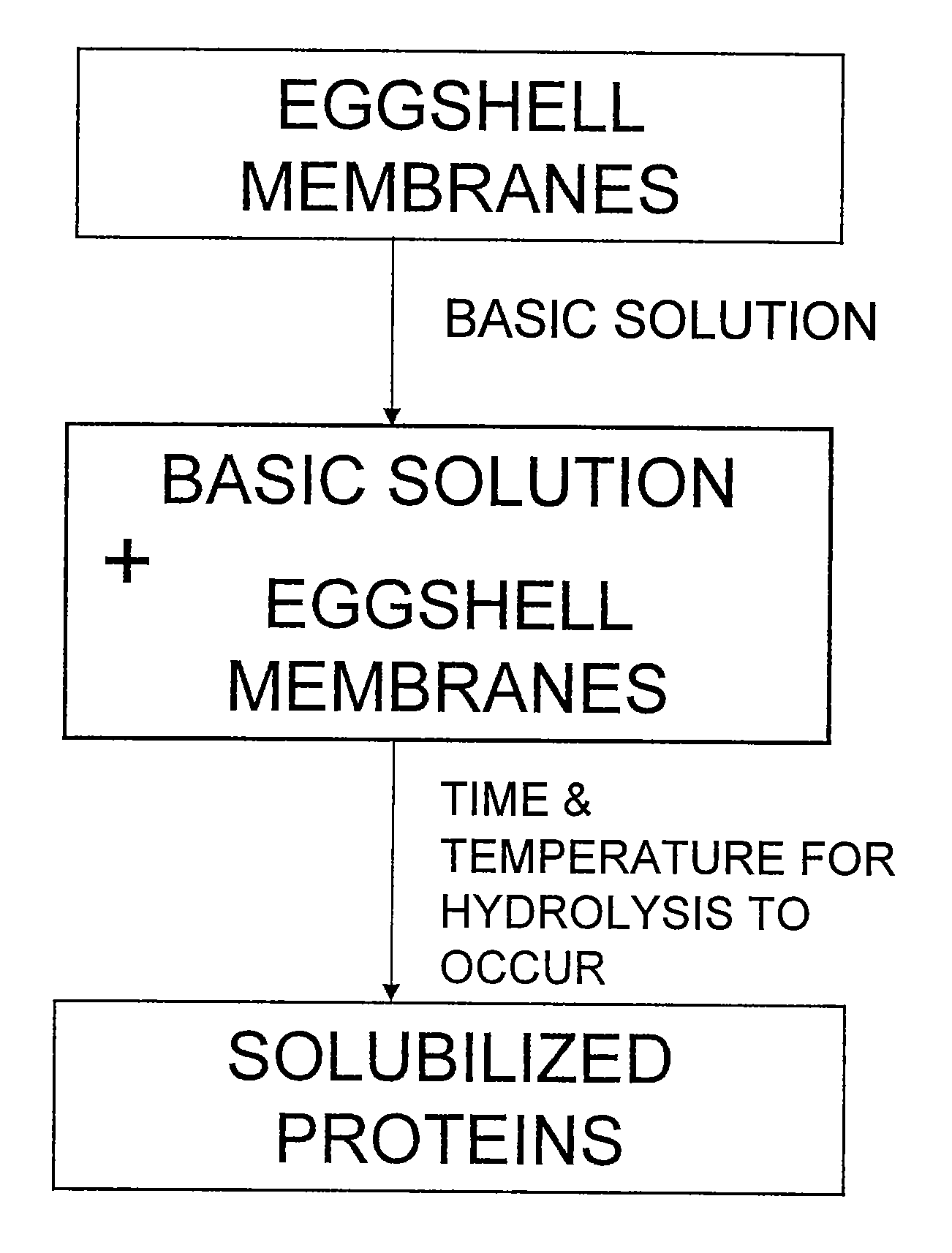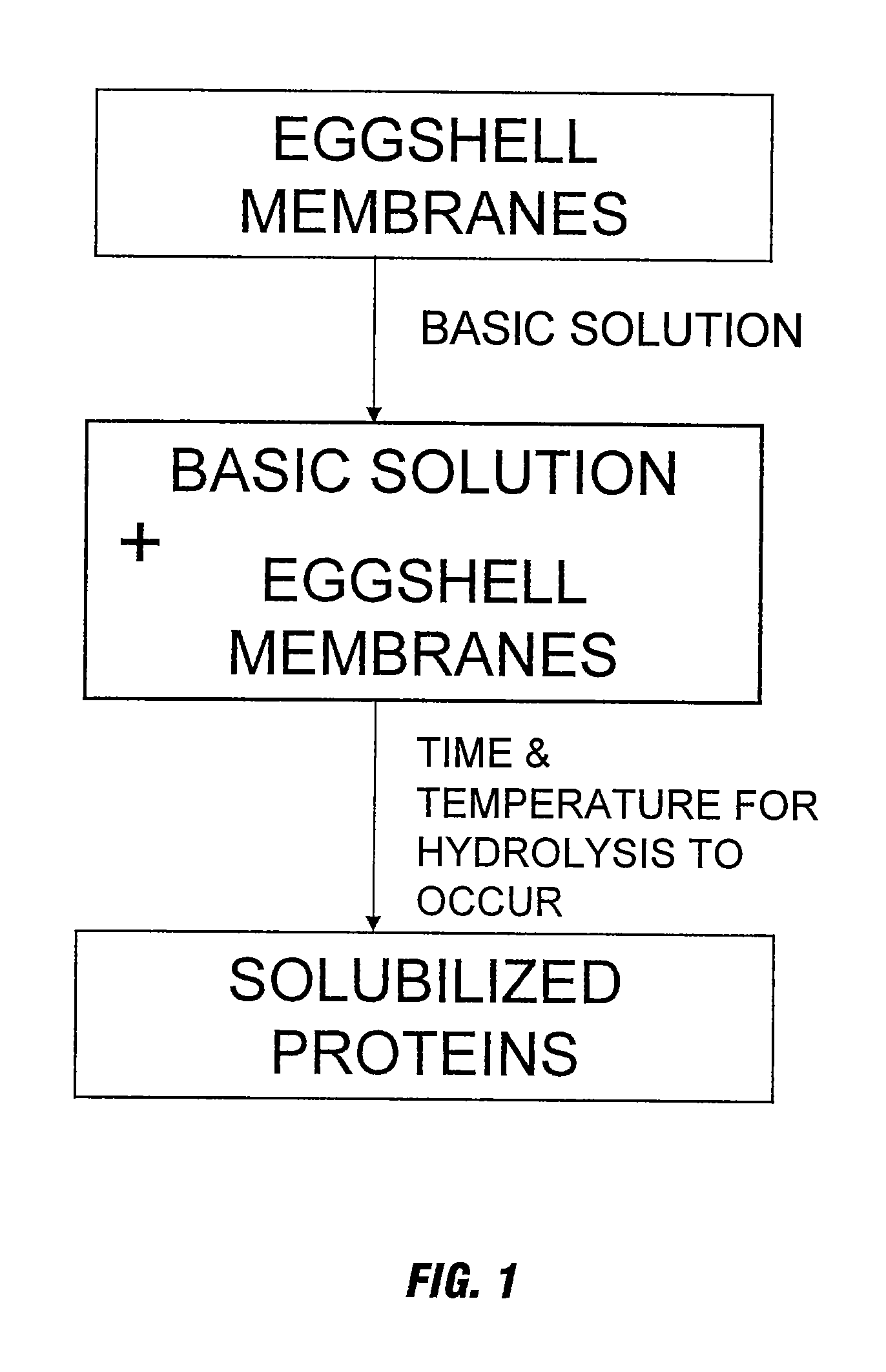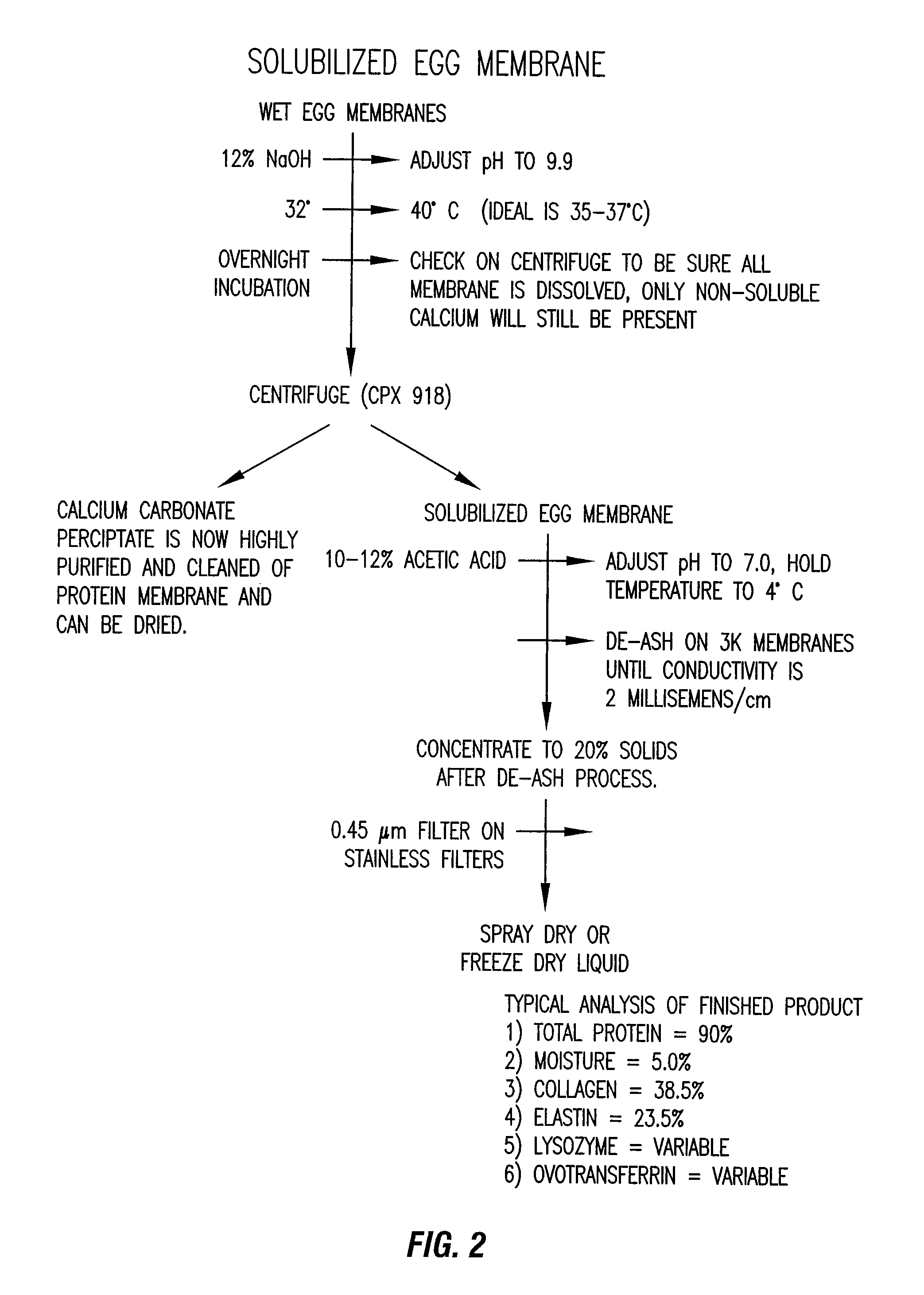Novel process for solubilizing protein from a proteinaceous material and compositions thereof
a technology of proteinaceous material and solubilizing process, which is applied in the direction of peptides, drug compositions, peptides, etc., can solve the problems of low protein solubilization from the starting material by these processes, the difficulty of the technique of eggshell membrane solubilization, and the inability to solubilize protein from the starting material, etc., to achieve the effect of increasing the yield of the solubilized protein composition and lowering the mineral content of the solub
- Summary
- Abstract
- Description
- Claims
- Application Information
AI Technical Summary
Benefits of technology
Problems solved by technology
Method used
Image
Examples
example 1
[0057]Shown below is data resulting from the analysis of various samples of the resulting protein composition obtained by solubilizing avian eggshell membrane using a process of the present invention.
[0058]As indicated below, the solubilized protein composition was spray dried (SD), freeze dried (FD), or paddle dried (PD). Paddle dried is a common technique used by some egg breaking facilities to dry eggshells on a commercial scale.
[0059]The total protein (TP) concentration of the solubilized protein composition was measured using Leco instruments (St Joseph, Mich.) following the Association of Analytical Chemists (AOAC) protein by combustion method 990.03. The solubilized protein composition was determined “as is” in its current physical state as well as on a “dry basis”.
[0060]The ash content was determined using AOAC method 942.05. The percent solubility of the resulting protein composition was determined using standard techniques. The percent collagen, elastin and sulfated glycan...
example 2
Process for Making the Product Referred to as Composition A in FIG. 3A:
[0064]The process for making the product referred to as Composition A includes adding eggshell membranes (wet, dry or frozen) to a jacketed 316 stainless tank followed by 5% sodium hydroxide. The tank contents were heated to 50° C. while stirring until hydrolysis was completed which is 3 to 4 hours. The tank stirrer was shut off after hydrolysis was complete and eggshell is allowed to settle out. (Approx. 30 min.) Hydrolysis was monitored until no membrane was visible and only the eggshell remains.
[0065]The hydrolyzed membrane was pumped through a 250-500 μm membrane and into the centrifuge for separation of eggshell fines from the supernatant liquid.
[0066]After centrifuging, the supernatant liquid was pumped into a 1,000 Dalton to 10,000 Dalton membrane system, where the ash was removed until it measures less than 4 milliSiemens / cm at which time the pH was adjusted to pH 6.8-7.6 with 0.5% acetic acid and dialyze...
example 3
Process for Making the Product Referred to as Composition B in FIG. 3A:
[0068]Egg membranes (wet, dry or frozen) were added to a jacketed 316 stainless tank followed by 5% sodium hydroxide. The tank contents were heated to 50° C. while stirring until hydrolysis was completed which is 3 to 4 hours. The tank stirrer was shut off after hydrolysis was complete and eggshell is allowed to settle out. (Approx. 30 min.) Hydrolysis was monitored until no membrane is visible and only the eggshell remains.
[0069]The hydrolyzed membrane is pumped through a 250-500 μm membrane and into the centrifuge for separation of eggshell fines from the supernatant liquid.
[0070]After centrifuging, the hydrolyzed membrane was diafiltered through a 100,000 molecular weight cutoff membrane. The retentate was saved and conductivity was reduced from 140 milliSiemens / cm to 4 milliSiemens / cm and concentrated to 25-30% solids and spray dried. The results are shown in the following table and in FIG. 3A.
TABLE 5Percent ...
PUM
| Property | Measurement | Unit |
|---|---|---|
| Temperature | aaaaa | aaaaa |
| Temperature | aaaaa | aaaaa |
| Temperature | aaaaa | aaaaa |
Abstract
Description
Claims
Application Information
 Login to View More
Login to View More - R&D
- Intellectual Property
- Life Sciences
- Materials
- Tech Scout
- Unparalleled Data Quality
- Higher Quality Content
- 60% Fewer Hallucinations
Browse by: Latest US Patents, China's latest patents, Technical Efficacy Thesaurus, Application Domain, Technology Topic, Popular Technical Reports.
© 2025 PatSnap. All rights reserved.Legal|Privacy policy|Modern Slavery Act Transparency Statement|Sitemap|About US| Contact US: help@patsnap.com



